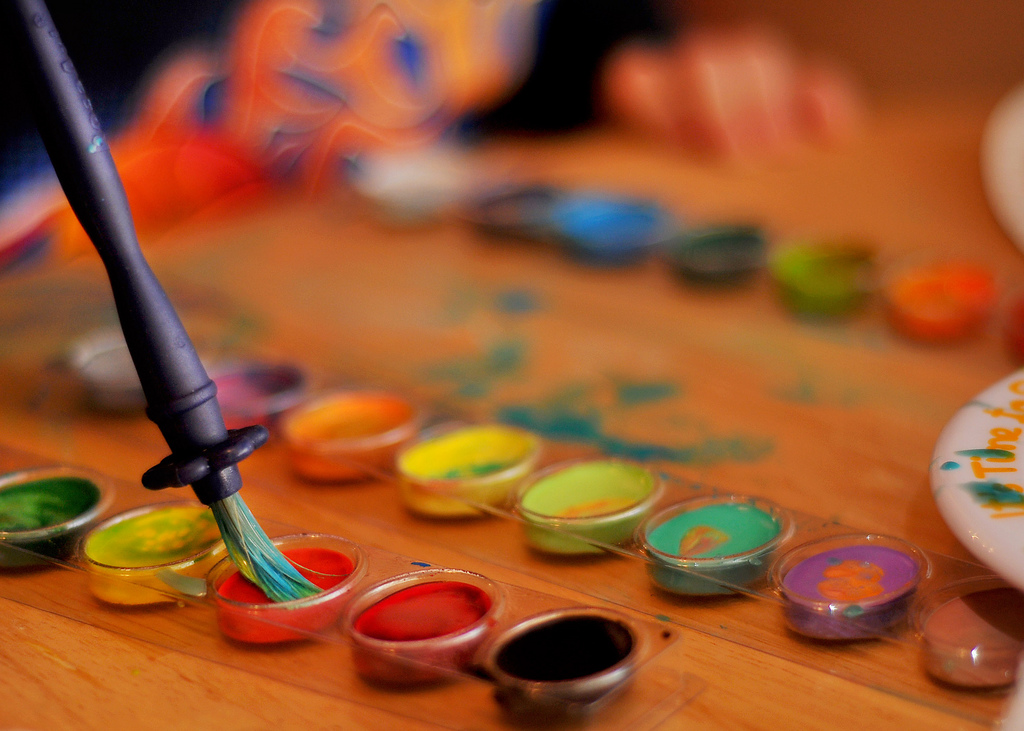 In 2011, South African archeologists reported finding a 100,000 year old human-made ochre-based mixture which could have been used like paint. Cave paintings drawn with red or yellow ochre, hematite, manganese oxide, and charcoal may have been made by early Homo-sapiens as long as 40,000 years ago.
In 2011, South African archeologists reported finding a 100,000 year old human-made ochre-based mixture which could have been used like paint. Cave paintings drawn with red or yellow ochre, hematite, manganese oxide, and charcoal may have been made by early Homo-sapiens as long as 40,000 years ago.Ancient coloured walls at Dendera, Egypt, which were exposed for years to the elements, still possess their brilliant colour, as vivid as when they were painted about 2,000 years ago. The Egyptians mixed their colours with a gummy substance, and applied them separate from each other without any blending or mixture. They appear to have used six colours: white, black, blue, red, yellow, and green. They first covered the area entirely with white then traced the design in black, leaving out the lights of the ground colour.
By the proper onset of the Industrial Revolution, paint was being ground in steam powered mills and an alternative to lead based pigments was found in a white derivative of zinc oxide. Interior house painting increasingly became the norm as the 19th century progressed, both for decorative reasons and because the paint was effective in preventing the walls rotting from damp. Linseed oil was also increasingly used as an inexpensive binder.
In 1866, Sherwin-Williams in the United States opened as a large paint-maker and invented a paint that could be used from the tin without preparation. It was not until the stimulus of World War II created a shortage of linseed oil in the supply markets that artificial resins, or alkyds, were invented. Cheap and easy to make, they also held the colour well and lasted for a long time.
 Since the time of the Renaissance, siccative (drying) oil paints, primarilylinseed oil, have been the most commonly used kind of paints in fine art applications; oil paint is still common today. However, in the 20th century, water-based paints, including watercolours and acrylic paints, became very popular with the development of acrylic and other latex paints. Milk paints(also called casein), where the medium is derived from the natural emulsion that is milk, were popular in the 19th century and are still available today. Egg tempera (where the medium is an emulsion of raw egg yolk mixed with oil) is still in use as well, as are encaustic wax-based paints. Gouache is a variety of opaque watercolor which was also used in the Middle Ages and Renaissance for manuscript illuminations. The pigment was often made from ground semiprecious stones such as lapis lazuli and the binder made from either gum arabic or egg white. Gouache, also known as 'designer color' or 'body color' is commercially available today.
Since the time of the Renaissance, siccative (drying) oil paints, primarilylinseed oil, have been the most commonly used kind of paints in fine art applications; oil paint is still common today. However, in the 20th century, water-based paints, including watercolours and acrylic paints, became very popular with the development of acrylic and other latex paints. Milk paints(also called casein), where the medium is derived from the natural emulsion that is milk, were popular in the 19th century and are still available today. Egg tempera (where the medium is an emulsion of raw egg yolk mixed with oil) is still in use as well, as are encaustic wax-based paints. Gouache is a variety of opaque watercolor which was also used in the Middle Ages and Renaissance for manuscript illuminations. The pigment was often made from ground semiprecious stones such as lapis lazuli and the binder made from either gum arabic or egg white. Gouache, also known as 'designer color' or 'body color' is commercially available today.
No comments:
Post a Comment